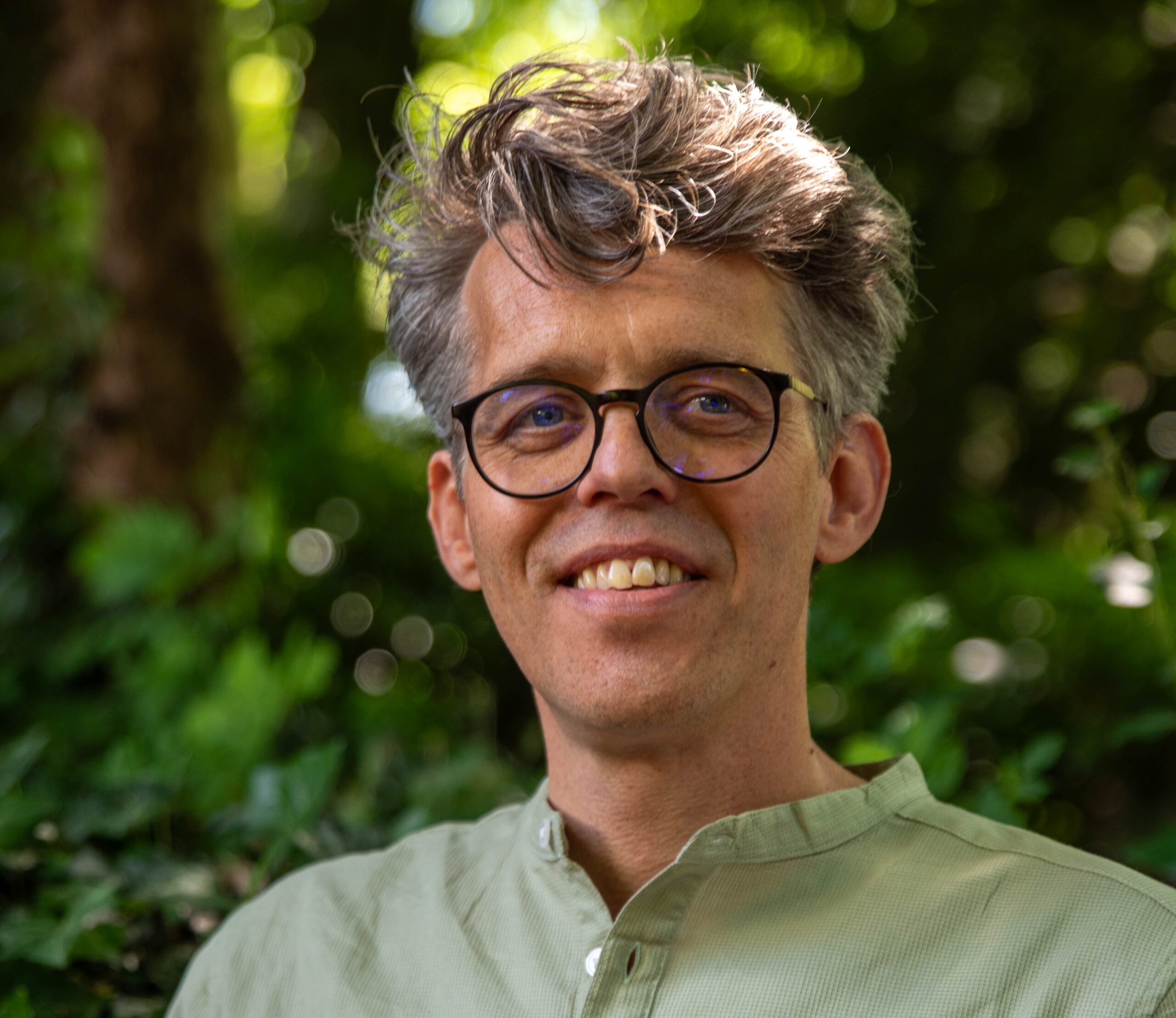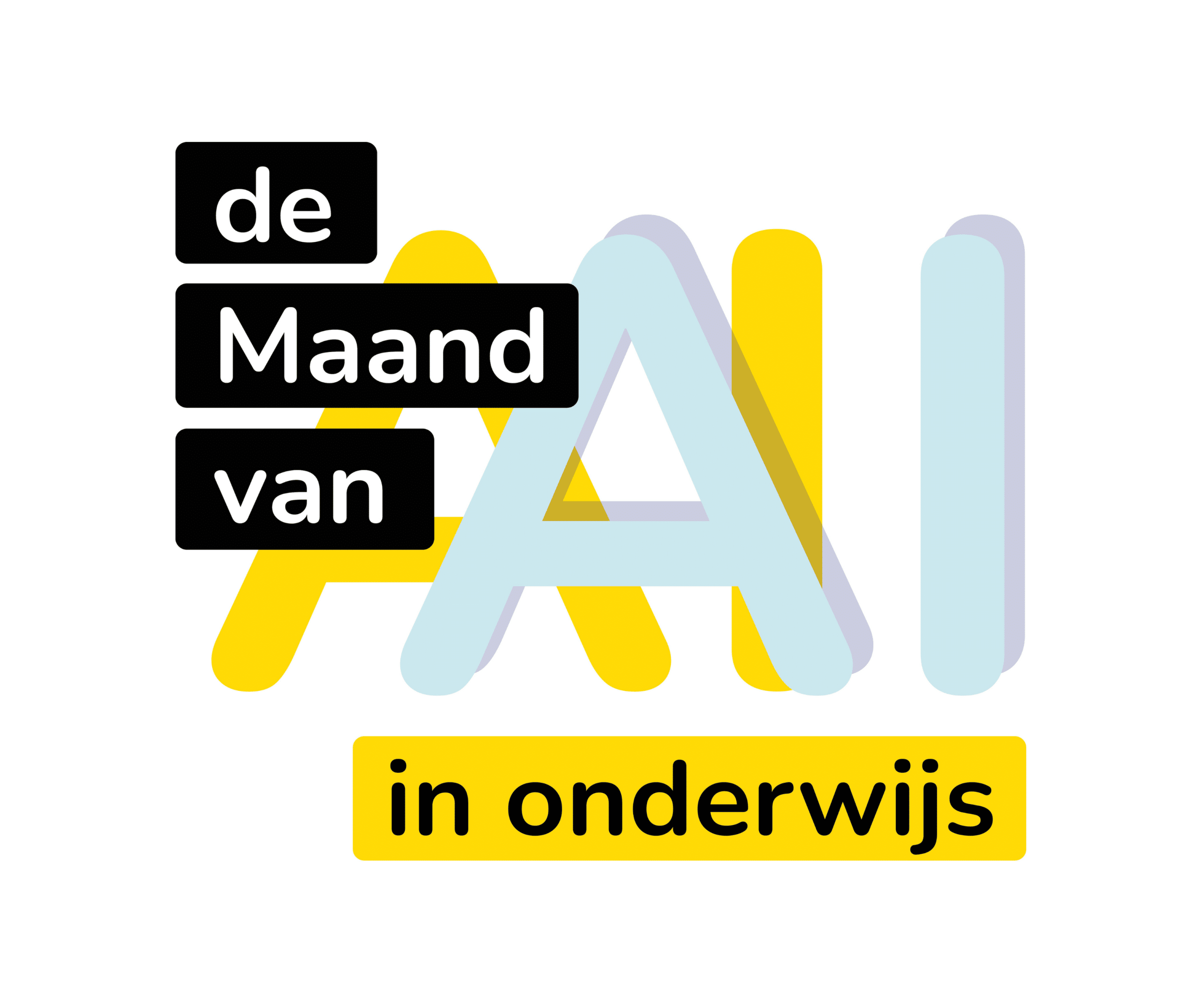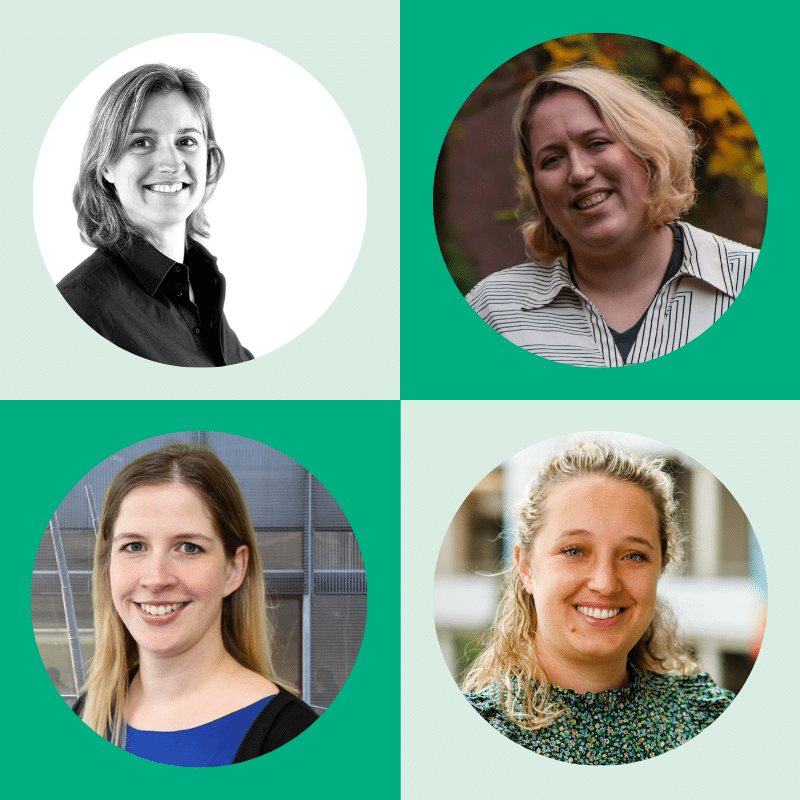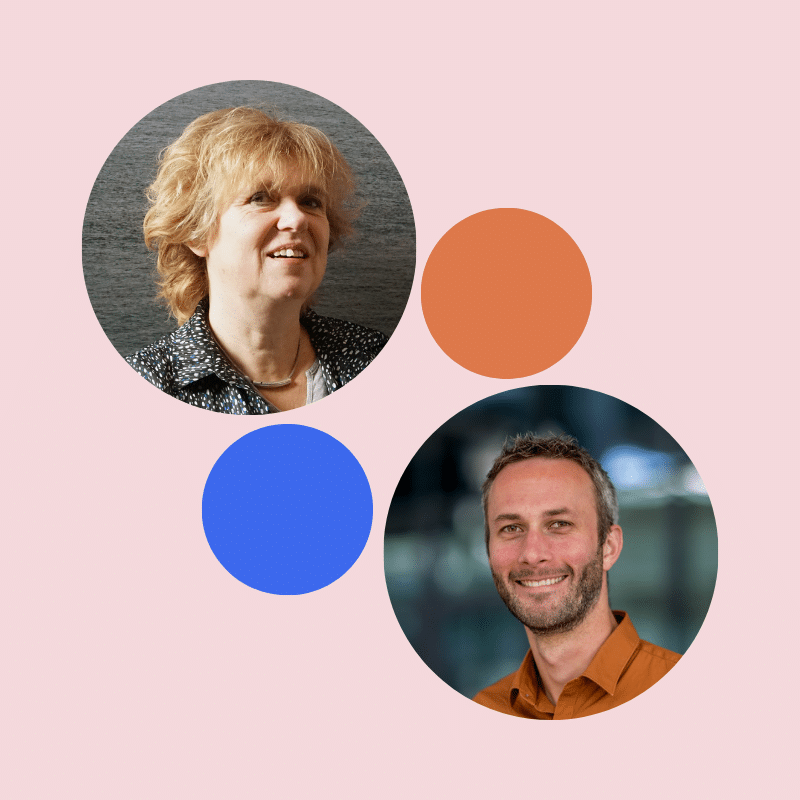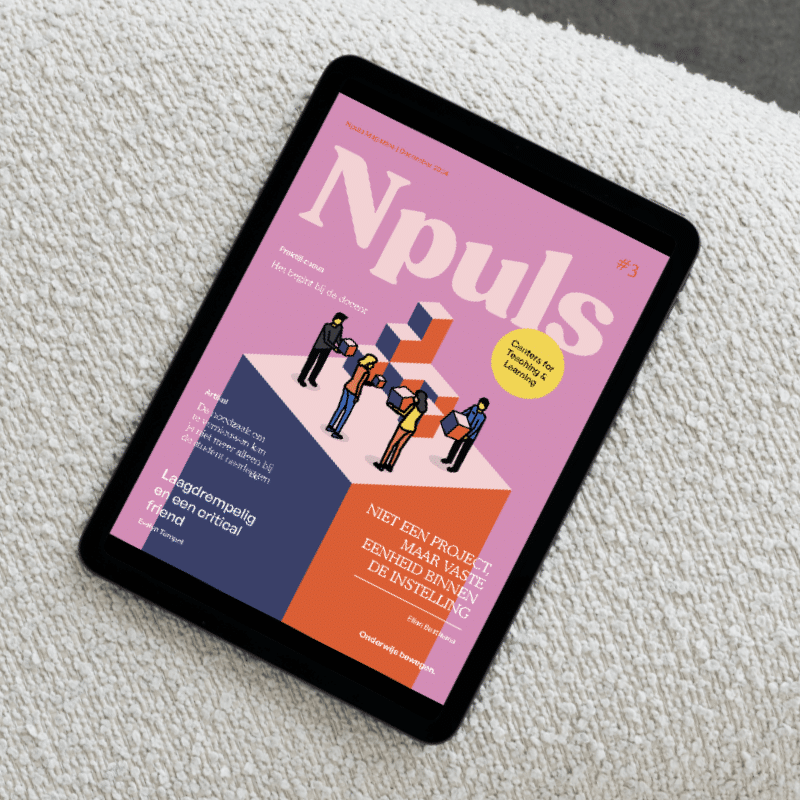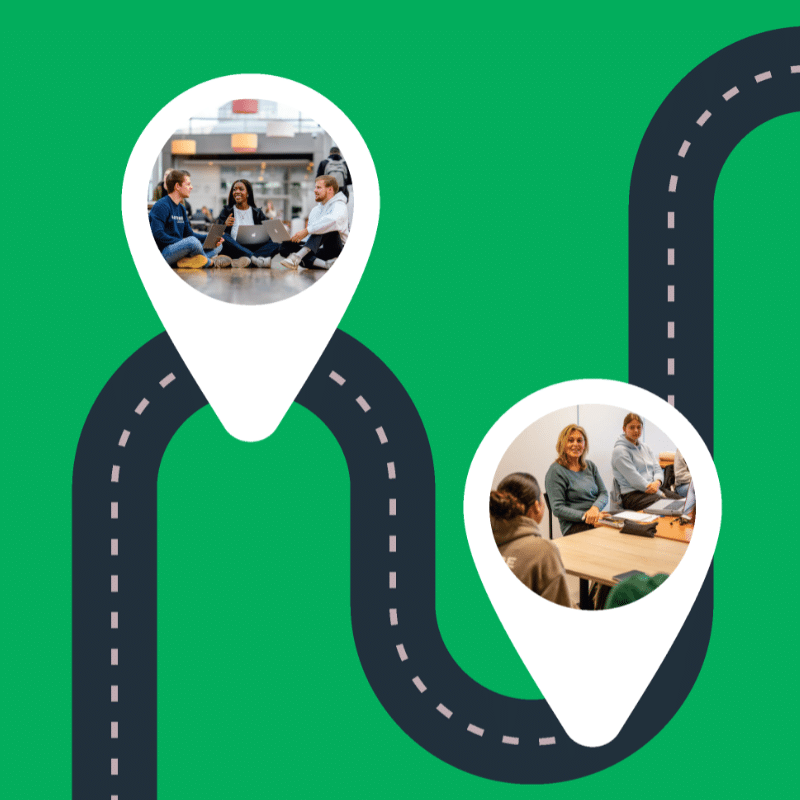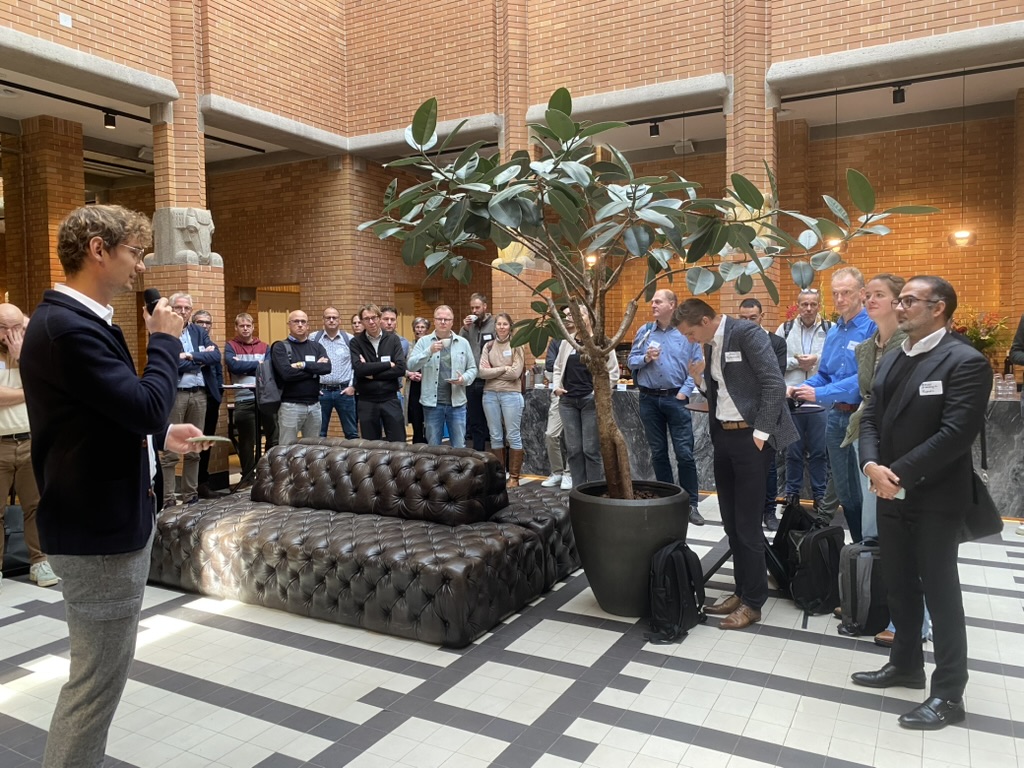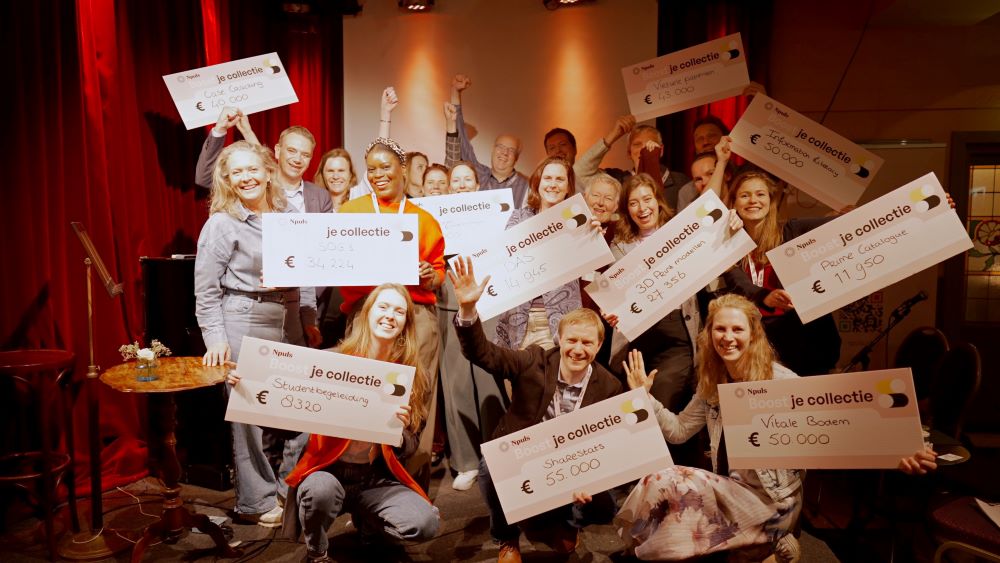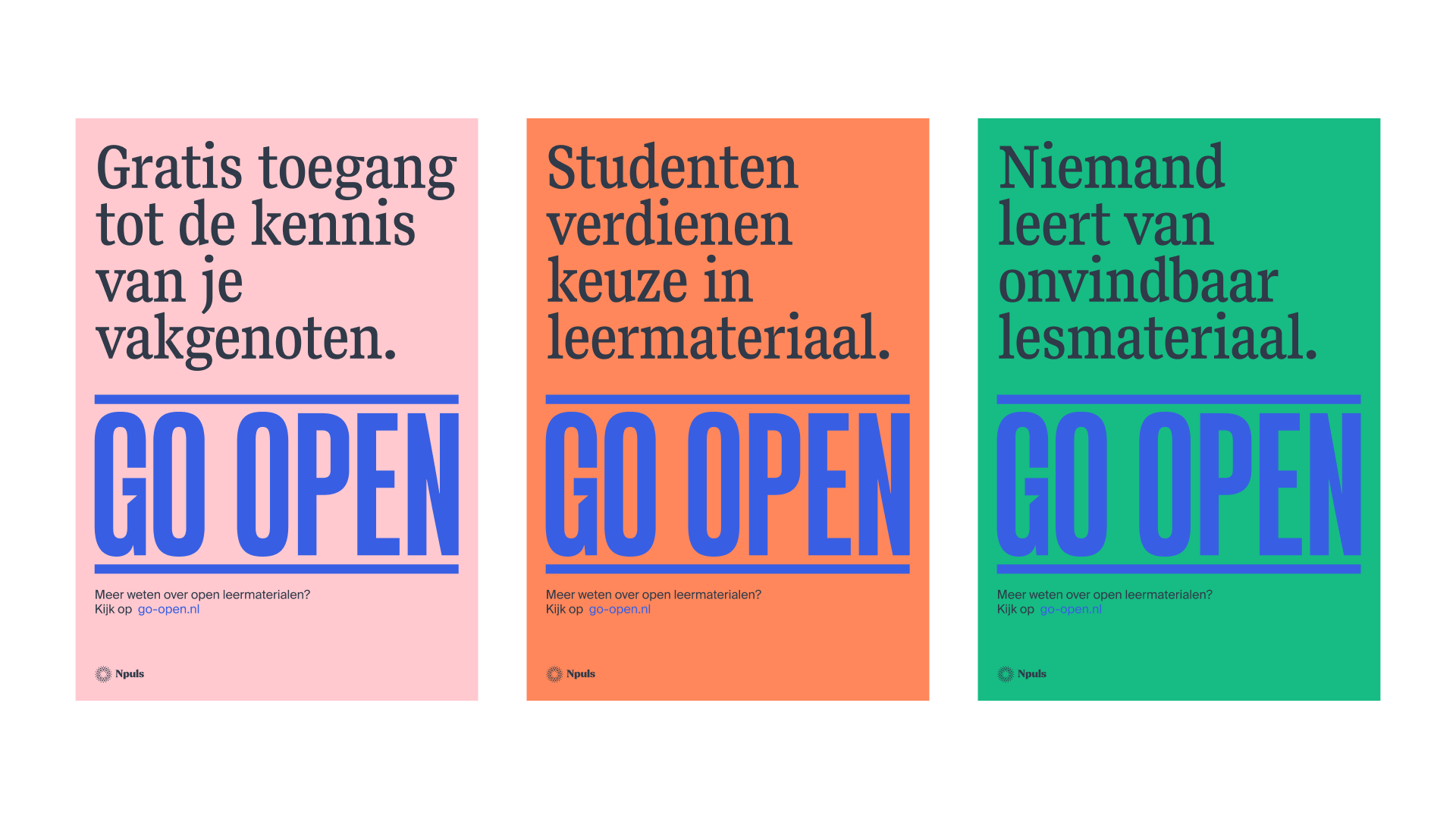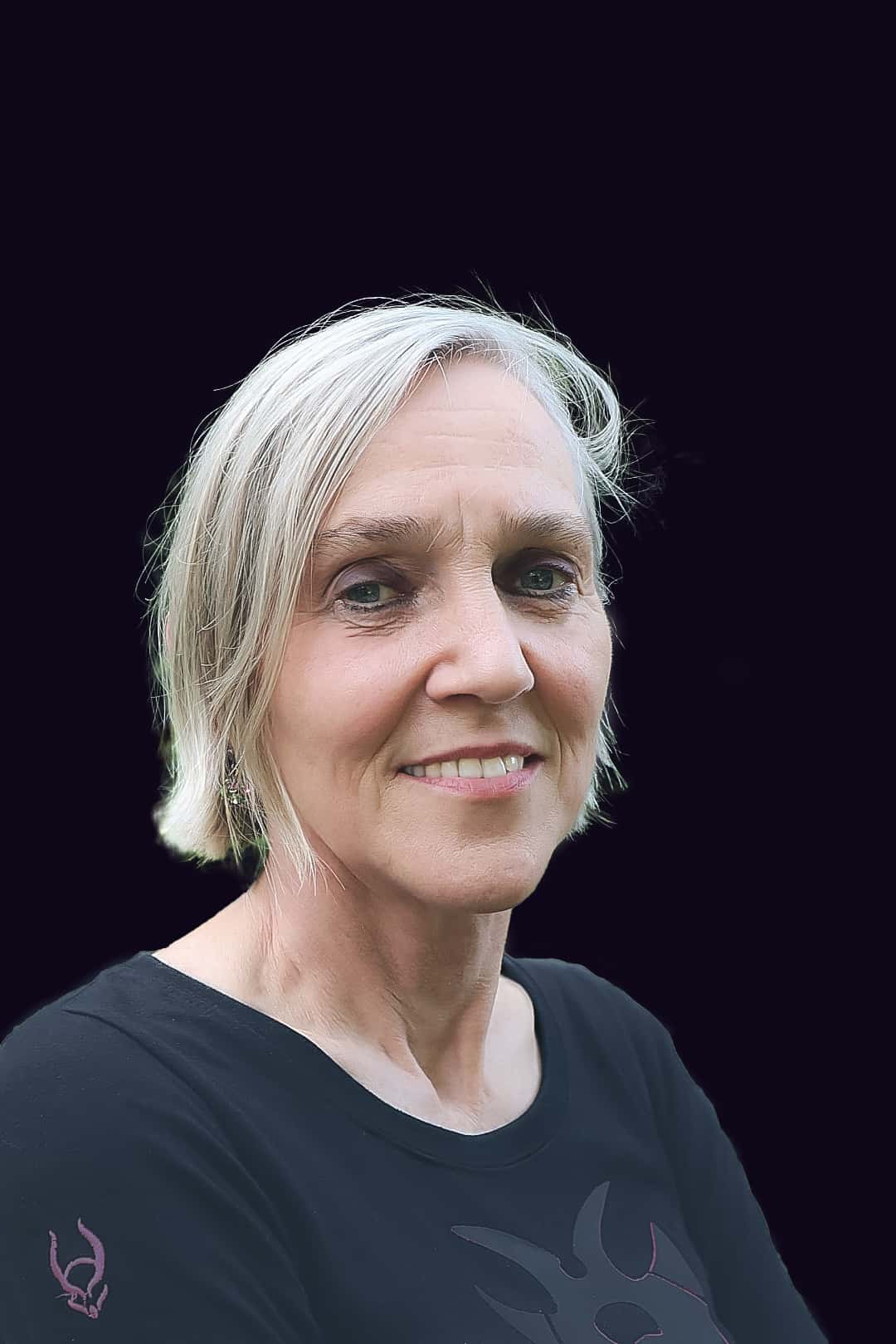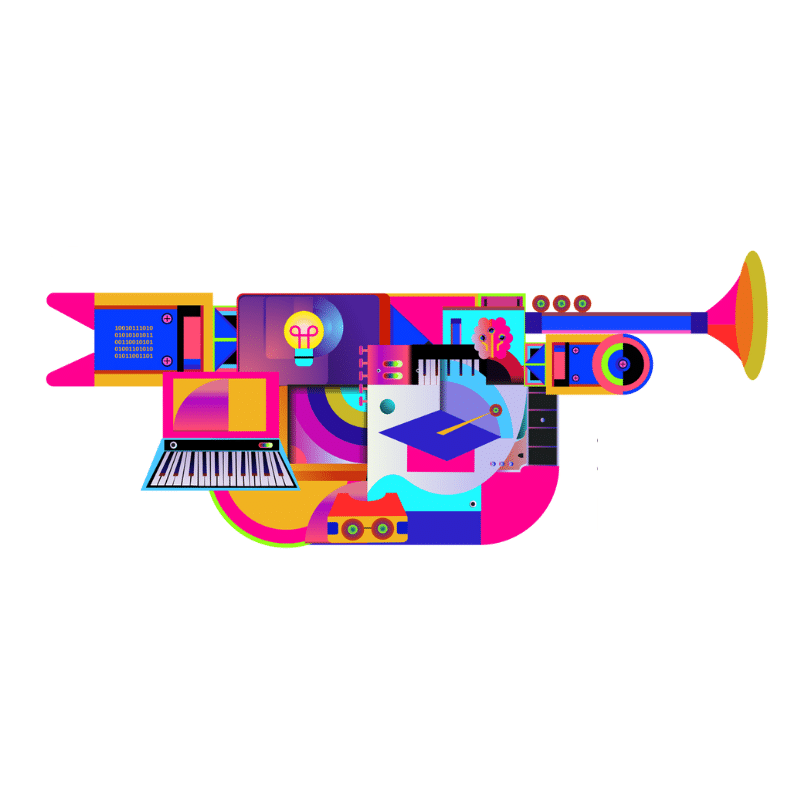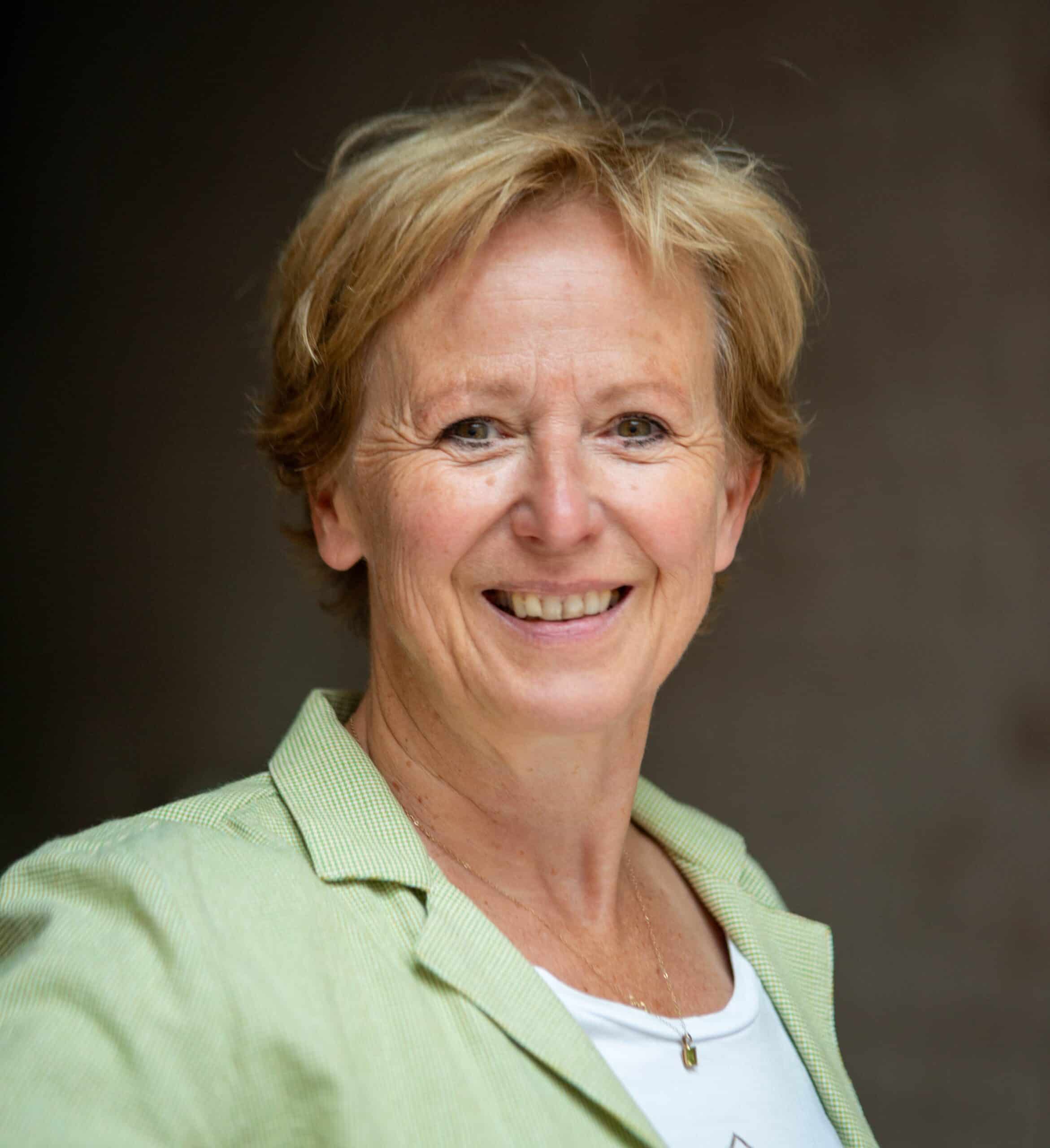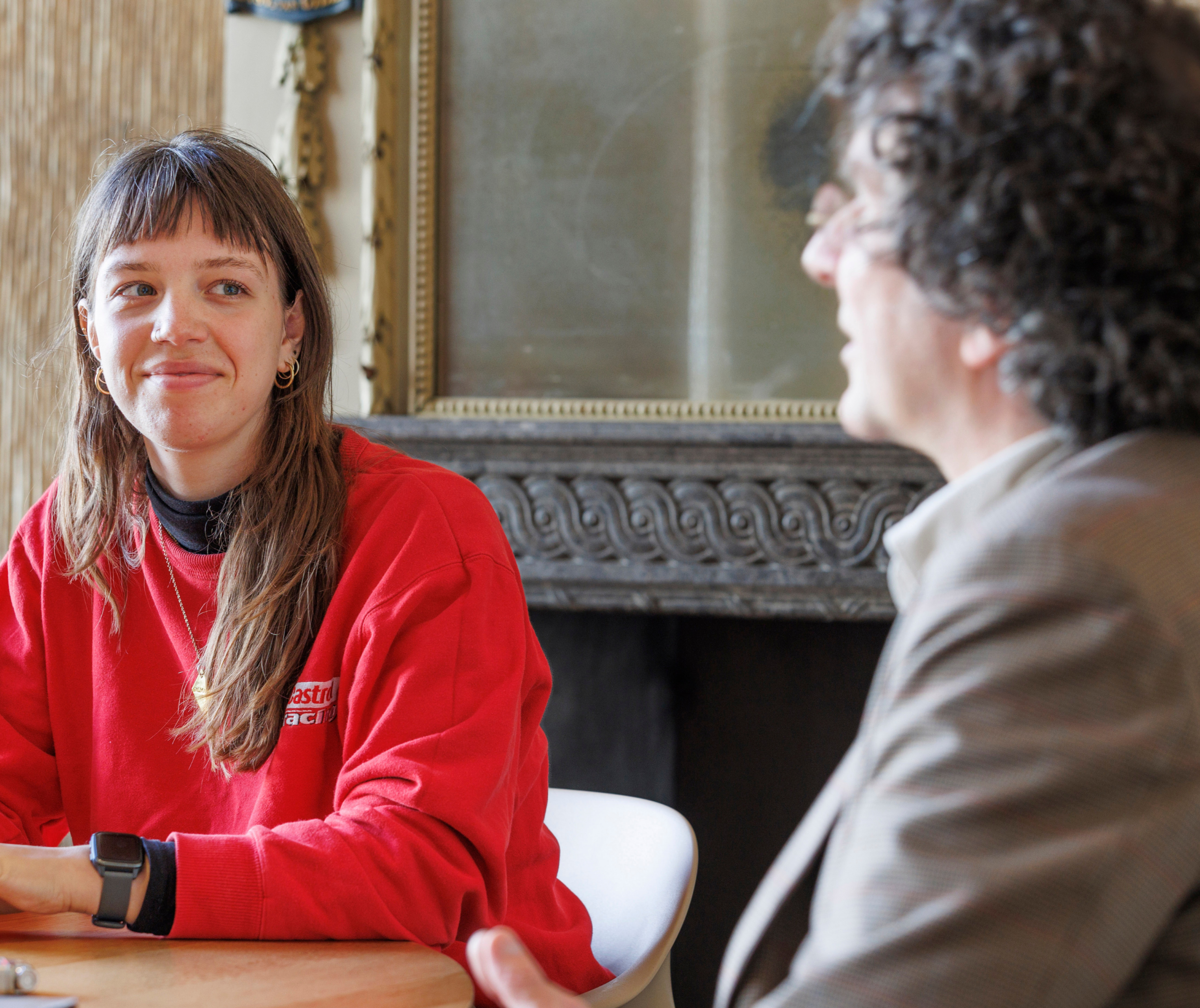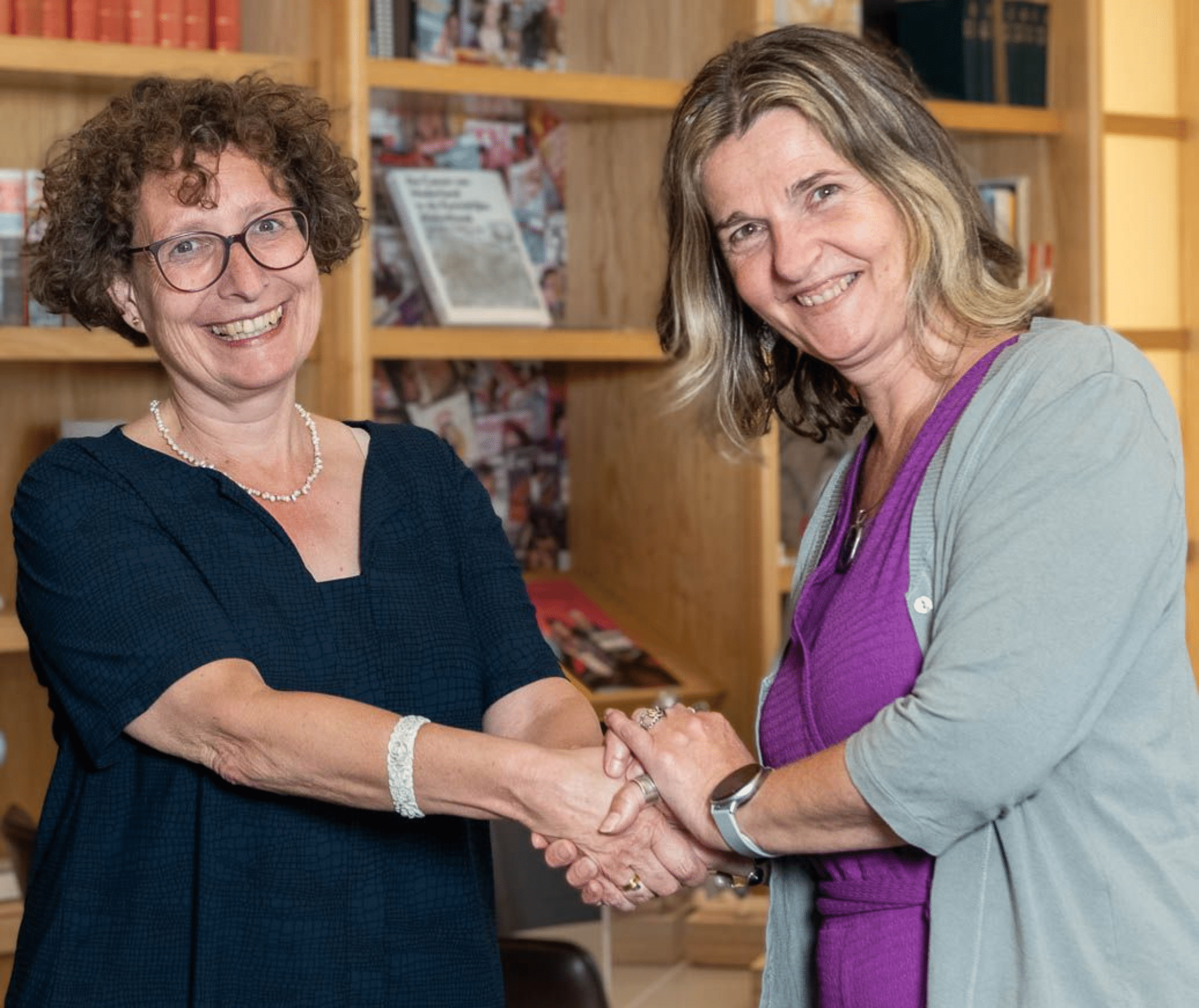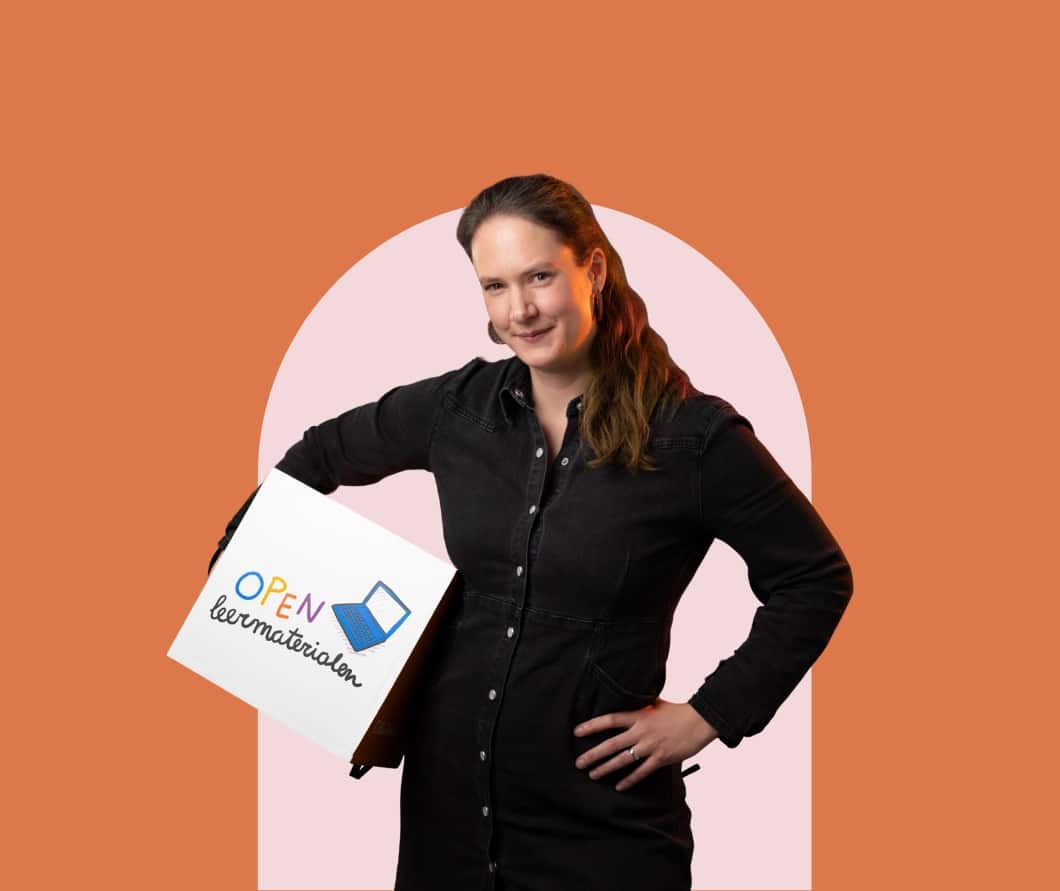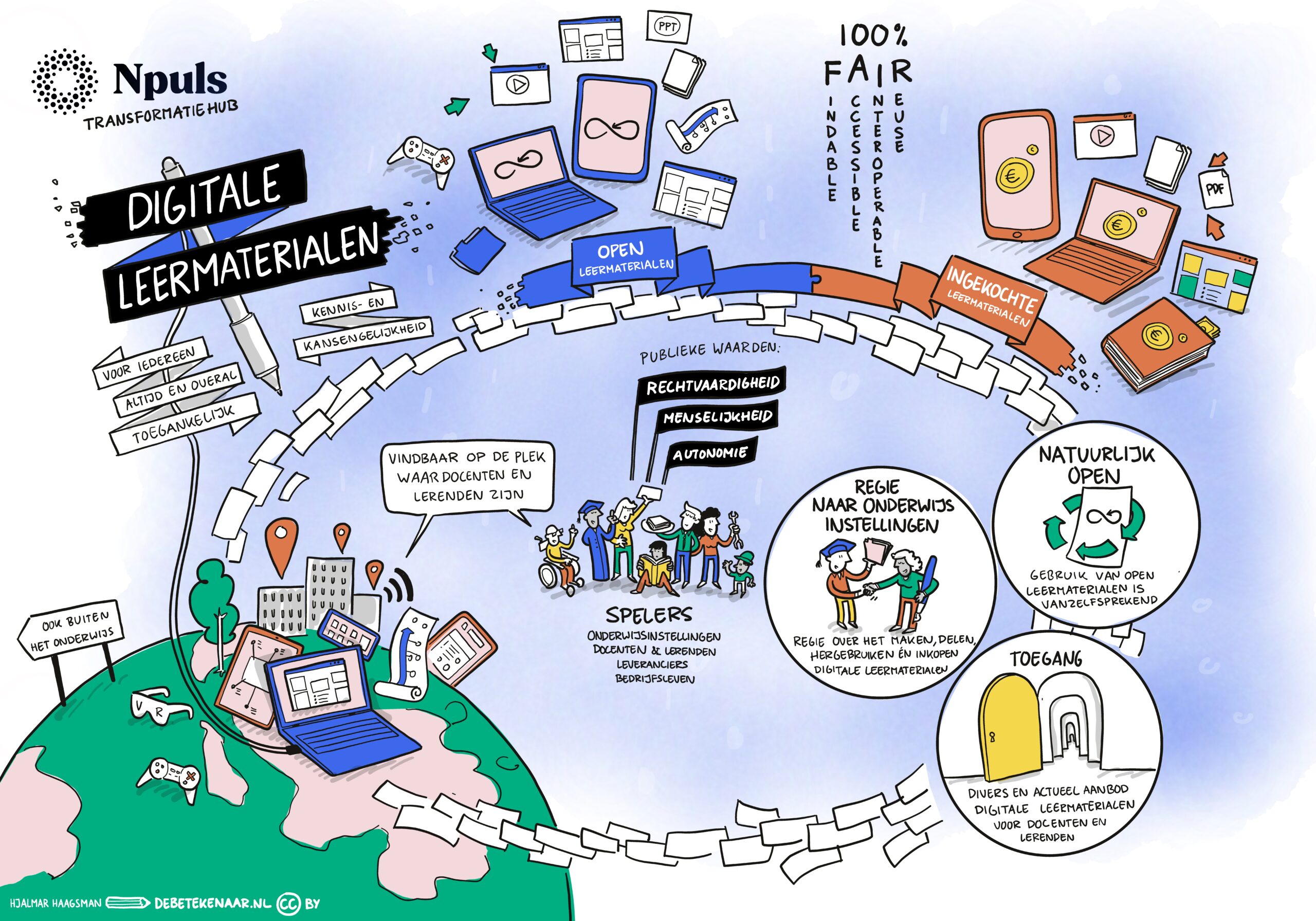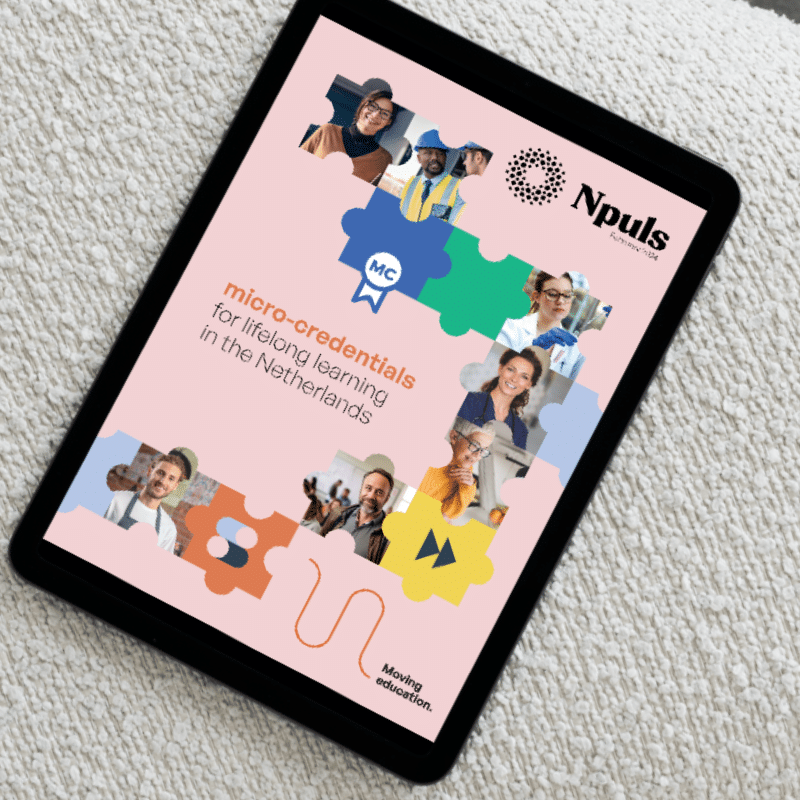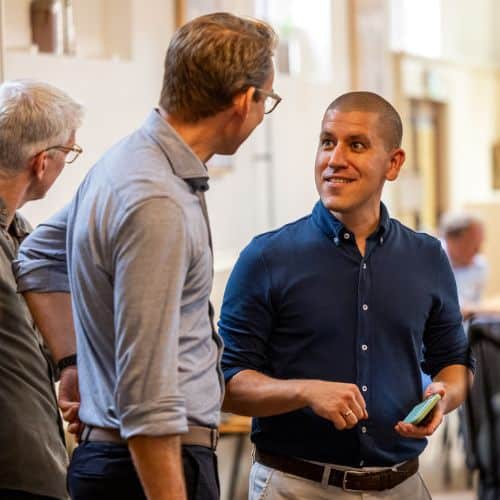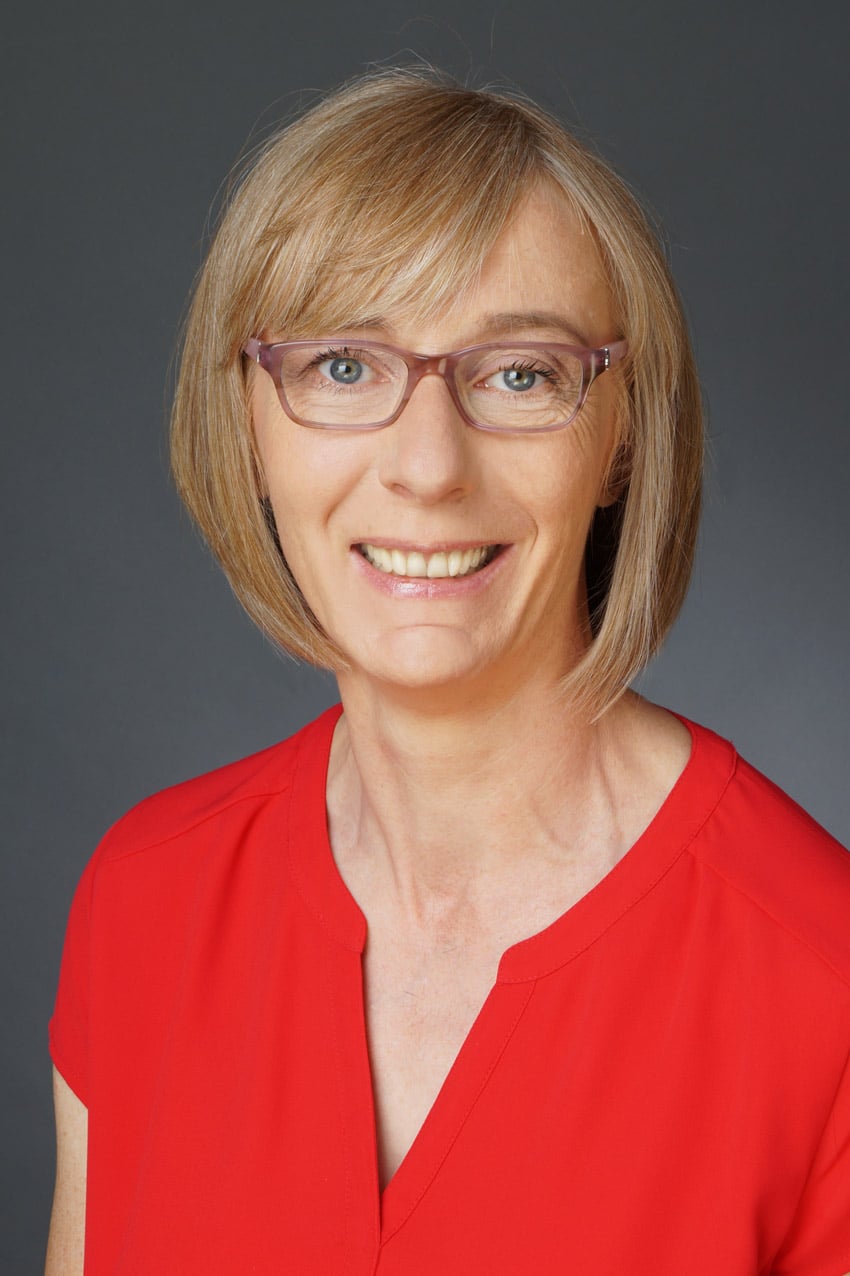One of Npuls’ ambitions is that by 2030, all participating institutions will have set up or further developed a Center for Teaching & Learning (CTL). Read more about CTLs on this page.
What is a Center for Teaching & Learning?
A Center for Teaching & Learning ensures that a sectoral technology infrastructure and locally and nationally accumulated knowledge are made available more quickly to lecturers and educational staff. In a CTL, lecturers (teams) and educational staff can get advice and training on renewing their education, in a way that fits the educational institution’s context and culture. A CTL is always a recognisable, findable and identifiable organisational unit, but it can have a variety of forms. For example, a physical location, a network of people, an online platform, or a department. CTLs from different institutions are in contact with each other for knowledge exchange.
Goals of a Center for Teaching & Learning
- Promoting lecturer development and professional development
- Share knowledge on educational innovation (with the use of technology)
- Promoting educational innovation (with the use of technology)
- Supporting the organisation in educational innovation (using technology)
- Conduct and contribute to research on educational innovation (using technology).
Talking to an expert
Andrea Kottman, researcher at the University of Twente, researched different CTL structures at universities in Germany, Norway and the UK. What lessons can we learn from our foreign colleagues? And are there criteria that influence the design of a CTL? We asked Andrea.
CTL-subsidy scheme
A financial contribution is available from Npuls for all institutions to (further) develop a Center for Teaching & Learning within their own institution or together with other institutions.
- More information about the subsidy scheme can be found on this page.
- Rewatch webinars about the subsidy scheme.
Knowledge Bank
The added value of Extended Reality (XR)
Providing the best possible education to learners in tertiary education – that is the goal. XR is a powerful tool in achieving this. XR technologies bridge the gap between theory and practice, making learning more interactive, engaging, and effective. This knowledge product explains what XR is, what it enables, and how educational professionals can start using it.The potential power of public-private partnership: co-creation in action
In het onderwijs worden mooie instrumenten ontwikkeld. Maar hoe zorg je voor impact? En wat kunnen we leren van programma’s als Versnellingsplan Onderwijsinnovatie met ICT (VP), Doorpakken op Digitalisering (DP en Digitaal Bekwaam (DB). In deze kit vind je vind je verschillende materialen die je mag gebruiken en aanpassen.Frequently asked questions
Why do we need a Center for Teaching & Learning?
To provide world-class education, it is important for lecturers to always have the opportunity to develop themselves professionally. They require the latest insights and knowledge, to work evidence-informed, and to drive educational innovation in a good way. This is where CTLs offer support. CTLs play an important role for Npuls to realise the impact the programme whishes to have. For that, we need the results to match what learners and lecturers need, and for them to have direct access to knowledge. In a Center for Teaching & Learning, you apply general insights gained with and for lecturers to your own practice. This way, lecturers and learners can actually use the knowledge and facilities that institutions develop within the programme. That is why every educational institution (voactional and education trainings schools, universities of applied sciences, and research universities), together with other institutions, sets up a Center for Teaching & Learning.
Are we, as an institution, required to set up a CTL?
Npuls has a number of ambitions. One of them is to have supported all publicly funded institutions to have a CTL by 2030. So as an institution, you don’t decide if, but rather when, where, and how to set up such a center.
Are there any rules we, as an institution, have to follow?
There are acceptability criteria for the subsidy application. So: yes the subsidy application is of course subject to rules, these will be announced in the coming months. Joining the scheme also means participating in a knowledge sharing ecosystem in your cohort’s network and the national network of CTLs. In setting up a CTL, there is a lot of freedom to do this in a way that best suits the institution(s). When possible, the center will join and strengthen already existing initiatives. For example, if you already have an innovation lab or i-coaches approach, you can reinforce this with (or develop it into) a CTL.
Is there budget available to set up a CTL?
A grant (up to €500,000 per institution) is available for each publicly funded educational institution to set up a CTL, or to continue developing an existing CTL. Institutions can apply to the DUS-I subsidy office in one of four rounds, starting from September 2023, the last round will start in September 2026. Each round will award a number of applications each time; this way, every educational institution will have the opportunity to get started during Npuls. It is good to know that the subsidies are really meant as a one-off contribution. Each institution is itself responsible for further developing and continuing to finance the CTL.
Is collaboration with another institution(s) mandatory in the application for funding?
Collaboration across sectors is allowed but not a requirement. The assessment committee will assess the added value of the cooperation for education at the institution.
An institution must describe how it collaborates with other institutions in the development of the CTL, however, this does not (by definition) have to be accompanied by a signature of the Executive Board of the other institution(s). An institution may choose to apply independently. Collaborating institutions applying in the same round may decide to draft a joint text describing their collaboration (they will then both submit the same overlay/paragraph with their application).
Our educational institution is planning to merge with another educational institution. Can I still apply for a grant?
If an institution knows in advance that it will merge during the application process, there are two options:
1. If the institution merges with another institution, (fairly) at the beginning of the period of the subsidy scheme, when a lot of work still needs to be done regarding the CTL: then it is more sensible to wait with the application. After all, it is difficult to explain that the CTL is being set up specifically for the current (and soon-to-be ‘old’) institution and that (thus) the subsidy is being used specifically for the current (and soon-to-be ‘old’) institution. We therefore strongly advise against applying at that stage.
2. If the institution merges with another institution (fairly) at the end of the subsidy scheme period, in which case most of the CTL-related activities have already been carried out, the subsidy will be properly accounted for as having been spent on this specific institution and the application can therefore still be submitted. Note that the justification should still clearly address the sustainability component of the (almost) established CTL in the new context.
Our educational institution consists of several educational sectors. How does that work?
In the case of a combination institution, the following applies:
An educational institution applying for the CTL subsidy must formally be a publicly funded vocational and education training school, university of applied sciences or research university. We consider the legal entity of the institution (definition of an educational institution #1), it concerns the educational institution that can be found in RIO and that receives lump-sum allocations from the Ministry of Education, Culture and Science with a registration number.
The educational known to students and staff (definition of an educational institution #2) may consist of several educational institutions, known collectively by one name, and/or sharing locations and/or a board.
The subsidy scheme for CTLs is designed from the perspective of all tertiary institutions. These are also the accountability frameworks of Npuls. The application will has to be submitted by a vocational and education training school, university of applied sciences or research university (according to definition #1). It is also the case that the subsidy application (i.e. the projects, activities and results) must officially focus on tertiary education.
At the same time, the project can be inclusive in the wider educational institution (definition #2). After all, the CTL is expected to work institution-wide. This may therefore mean that although the organisation develops it from a tertiary educational part, the whole organisation can contribute to it and make use of it. Also, the definition of cooperation in the subsidy scheme does not impose any conditions on the ‘inclusion’ of other educational institutions, even if they are not from the same sector or do not apply themselves; so, for example, this may also include a secondary education school part.
This also applies to the concept of ‘lecturers’: all lecturers of the educational institution can, through internal cooperation, use what has been developed in/by the CTL.
In short: in the subsidy application and the accompanying project, you focus entirely on vocational and education training schools, universities of applied sciences or research universities But at the same time, you can parallel or consecutively allow other sectors to benefit ‘in-house’ from what is being done.
All this suits the objective of Npuls to make the national knowledge acquired and the facilities developed available to the institution in a way that fits its own context. And the own context in this case is a combination institution.
